Gigabyte B450 I Aorus Pro WiFi Review
Written by
Antony Leather
September 17, 2018 | 13:00
Tags: #am4 #b450 #mini-itx #motherboard #ryzen #wifi
Companies: #amd #aorus #gigabyte
1 — Gigabyte B450 I Aorus Pro WiFi Review2 — Test Setup3 — Content Creation4 — Gaming Performance5 — M.2 and SATA 6Gbps Performance6 — Audio Performance7 — Power Consumption8 — Overclocking, Performance Analysis, and Conclusion
Manufacturer: Gigabyte
UK price (as reviewed): £129.99 (inc. VAT)
US price (as reviewed): $119.99 (exc. tax)
While mini-ITX support on the X470 chipset is sorely lacking, nearly every motherboard manufacturer has something to offer when it comes to the cheaper B450 chipset, and Gigabyte’s effort here is the B450 I Aorus Pro WiFi. Immediately we’re struck by a much more premium looking board than the AB350N-Gaming WiFi, and indeed it sits under the Aorus brand rather than the more budget-focussed Gaming series.
The board features a fairly lowly 4+2 phase power delivery, and with fewer heatsinks than the B450 Aorus Pro, we’re likely looking at a board that will get pretty toasty with an overclocked eight-core Ryzen CPU — more on that later. There are a few other niggles with the specifications too that mean this is likely only going to appeal to low budgets.
There’s no USB 3.1 Type-C port, only a single M.2 port, and the pair of fan headers are going to leave you wanting if you have an all-in-one liquid cooler with a header-powered pump, fans, and several case fans. In fact, we can back up that claim by our need to fish out a fan splitter cable in order to power our AIO cooler and test bench fans at the same time. You expect fewer features on a mini-ITX motherboard, but we feel three headers is a minimum for a typical modern PC.
The lack of these features contrasts others on the board, oddly. For example, you get a very snazzy M.2 heatsink, which shaved 9°C off the load temperature of our Samsung 960 Evo — not the biggest drop we’ve seen, but on mini-ITX boards the top-mounted M.2 port is always in a cramped space between the DIMM slots and GPU so is rarely able to make use of any local or case airflow and maximise the benefits of the heatsink. The exception here is Asus’ recent ROG Strix boards that have a raised M.2 port, which does allow for better cooling. You also get Realtek ALC1220 audio — something Gigabyte seems keen to push with its mini-ITX boards despite the low price, as the AB350N-Gaming WiFi had it too, rather than dipping down to cheaper and worse codecs.
The M.2 port, thankfully, has the full range of support for the variety of SSDs out there and dishes out either PCIe 3.0 x4 or x2 bandwidth as well as supporting SATA 6Gbps M.2 SSDs, and beneath it is the single 16x PCIe slot that features Gigabyte’s Ultra Durable armour. Layout is pretty good too with all of the SATA ports located on the right side of the PCB, so there’s no need to thread them around or over the DIMM slots like there is on some mini-ITX boards.
Layout is pretty good too with all of the SATA ports located on the right side of the PCB, so there’s no need to thread them around or over the DIMM slots like there is on some mini-ITX boards.
RGB lighting is fairly restrained with the AB350N-Gaming WiFi with a row of LEDs under the right side of the PCB but nothing up top except a 3-pin addressable header for your own RGB LED strips. There are also no overclocking or testing tools — you’re left with just the standard two pins to clear the CMOS.
There does seem to be something unbalanced about the features on the board overall — the lowly power circuitry and pair of fan headers are in contrast not just to top-notch ALC1220-VB audio, Intel Gigabit LAN, and an M.2 heatsink, but also a trio of video outputs as well as onboard 802.11ac Wi-Fi, but it’s clear that paired with something like AMD’s Ryzen 5 2400G APU and its included air cooler, the B450 I Aorus Pro WiFi will feel much more at home than it would in a high-end mini-ITX gaming rig. You also get a reasonable six Type-A USB ports in total, with the four in addition to the two red USB 3.1 ports all being USB 3.0. The only other gripe we have is the set of audio outputs, which lack optical support and will also require the use of the onboard audio header to provide enough ports to power 7.1-channel speaker systems.
You also get a reasonable six Type-A USB ports in total, with the four in addition to the two red USB 3.1 ports all being USB 3.0. The only other gripe we have is the set of audio outputs, which lack optical support and will also require the use of the onboard audio header to provide enough ports to power 7.1-channel speaker systems.
- Chipset AMD B450
- Form factor Mini-ITX
- CPU support AMD Socket AM4
- Memory support Dual-channel, two slots, max 32GB
- Sound Eight-channel Realtek ALC 1220-VB
- Networking 1x Intel Gigabit Ethernet, 802.11ac Wi-Fi, Bluetooth 5
- Ports 1x M.2 PCIe 3.0 x4 32Gbps/SATA 6Gbps (up to 2280), 4 x SATA 6Gbps, 2 x USB 3.1 Type-A, 6 x USB 3.0 (2 via headers), 1 x LAN, audio out, line in, mic,
- Dimensions (mm)170 x 170
- Extras Magnetic Wi-Fi aerial
1 — Gigabyte B450 I Aorus Pro WiFi Review2 — Test Setup3 — Content Creation4 — Gaming Performance5 — M.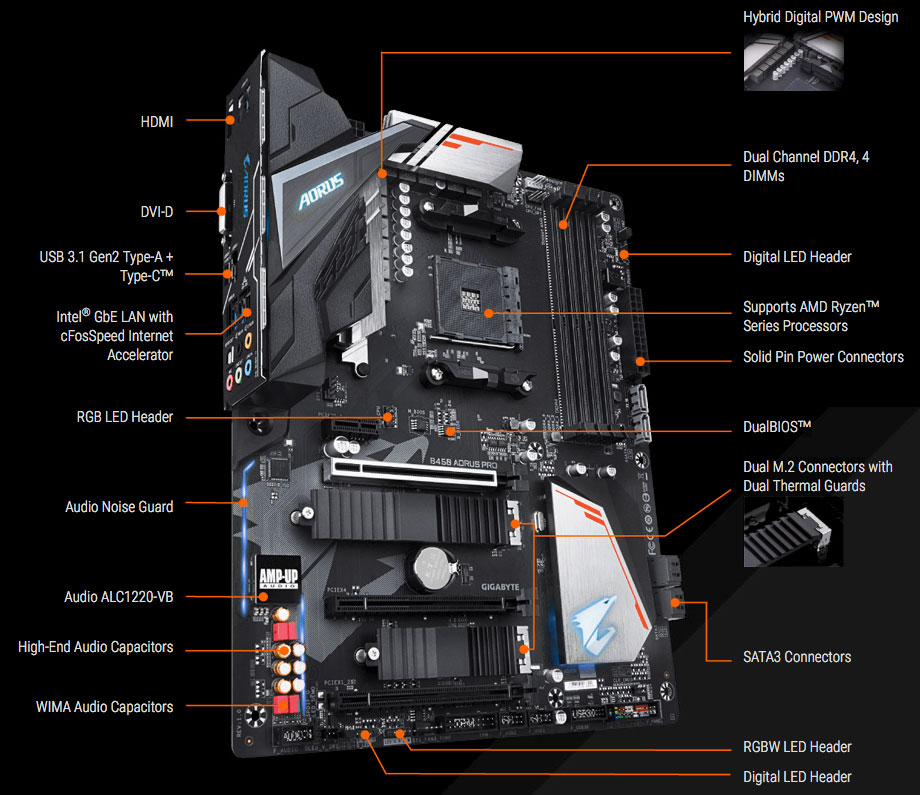 2 and SATA 6Gbps Performance6 — Audio Performance7 — Power Consumption8 — Overclocking, Performance Analysis, and Conclusion
2 and SATA 6Gbps Performance6 — Audio Performance7 — Power Consumption8 — Overclocking, Performance Analysis, and Conclusion
RELATED ARTICLES
Gigabyte Z390 Aorus Xtreme Review
Gigabyte goes all-out with one of the craziest boards for mainstream CPUs we’ve ever seen.
January 15, 2019 | 14:30
Gigabyte Z390 I Aorus Pro WiFi Review
Gigabyte aims for the mid-range with the latest in an excellent line of Intel mini-ITX motherboards
December 17, 2018 | 17:00
0
Gigabyte Z390 Aorus Master
Can Gigabyte topple MSI’s excellent MEG Z390 Ace with its own super-premium Z390 board?
October 26, 2018 | 11:00
MSI MPG Velox 100R Chassis Review
October 14 2021 | 15:04
Gigabyte B450 I Aorus Pro Wifi Review « TOP NEW Review
Gigabyte’s B450 I Aorus Pro WiFi is aiming high, especially considering it uses AMD’s B450 chipset as opposed to X470. Thankfully, on mini-ITX boards at least, there’s next to no difference between the two chipsets, as there’s no space to make use of the additional features that the more expensive X470 chipset offers anyway.
Thankfully, on mini-ITX boards at least, there’s next to no difference between the two chipsets, as there’s no space to make use of the additional features that the more expensive X470 chipset offers anyway.
Table of Contents
- SPECIFICATIONS
- Performance
- Conclusion
- VERDICT
- Best Gigabyte B450 I Aorus Pro Wifi prices ?
However, Gigabyte has some stiff competition, as the B450 version of the Asus ROG Strix mini-ITX board retails. Gigabyte has certainly upped its game since its last AM4 mini-ITX effort though – the B450 I Aorus Pro WiFi looks and feels decidedly more premium than the last-generation B350N Gaming AC WiFi.
There’s a large VRM heatsink covering the 4+2 phase power circuitry, and you also get a large M.2 heatsink with the port beneath it supporting either 4x PCI-E 3 or SATA-based SSDs. The heatsink dropped the temperature of our Samsung 960 Evo by 9°C too, so it’s definitely worth putting it to use. There’s no second port, though, so adding extra storage will involve using of one of the four SATA 6Gbps ports, which are all handily located on the edge, next to the DIMM slots.
The rest of the PCB is fairly spartan, and there’s a severe lack of fan headers. There are just two fan headers on the PCB, so you’ll need to invest in some splitter cables if you need to power more than a single case fan. What’s more, header-powered, dual-fan all-in-one liquid coolers will be tricky to set up too.
SPECIFICATIONS
Chipset AMDB450
Update — 2022.12.24
CPU socket AMD Socket AM4
Memory support 2 slots: max 32GB DDR4 (up to 3200MHz)
Expansion slots One 16x PCI-E3
Sound 8-channel Realtek 1220 Networking Intel Gigabit LAN
Overclocking No base clock overclocking, max CPU multiplier 63x; max voltages: CPU 1.5V, RAM 2V
Ports 4 x SATA 6 Gbps (B450), 1xM.2, 4 x USB 3, 4 x USB 3.1 Type-A, 1 x LAN, 3 x surround audio out
Dimensions (mm) 170 x 170
The rear I/O panel also seems to be at odds with the PCB in terms of features, as it’s bristling with useful connectors. There’s on-board 802. 11ac Wi-Fi and Bluetooth 5 support, six Type-A USB ports, including two USB 3.1 ports, and not a sign of USB 2 either.
11ac Wi-Fi and Bluetooth 5 support, six Type-A USB ports, including two USB 3.1 ports, and not a sign of USB 2 either.
There’s a trio of digital display outputs too, and an Intel-controlled LAN port. The only disappointment on the rear panel is that, despite the board sporting Realtek’s superb ALC1220 audio codec, there are only three audio outputs. There’s no optical output, and connecting a 7.1-channel speaker system will require using the case’s 3.5mm audio output via the on-board audio header. There’s little by way of lighting out of the box either, but there’s a row of RGB LEDs underneath the right side of the PCB, plus a single RGB header for LED strips.
The fan control section of the EFI is also excellent
Performance
We initially had issues firing up Gigabyte’s System Information Viewer Windows monitoring software, but these problems were fixed when Gigabyte sent us the B18.0522.1 update for it – you’ll need to do the same if you experience the same issues.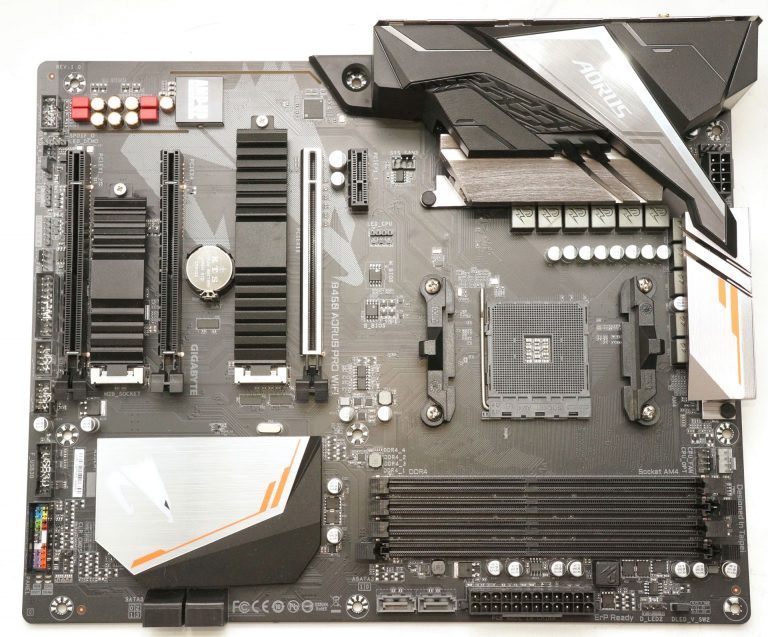 However, Gigabyte’s EasyTune overclocking software worked fine.
However, Gigabyte’s EasyTune overclocking software worked fine.
The fan control section of the EFI is also excellent, making it even more of a shame that there are just two fan headers. The rest of the EFI could do with some improvements too; it looks dated compared with the competition, with typical overclocking settings often spread across several tabs, while the Precision Boost Overdrive controls are bizarrely located in the peripherals section.
Check Amazon
We managed to overclock our Ryzen 72700X to the usual 4.25 GHz frequency and, despite the lowly power circuitry, the board held up under sustained multi-threaded load for a good five minutes.
However, it eventually succumbed and the software revealed that extremely high VRM temperatures were the likely cause, with the CPU never topping 85°C. It was stable enough to pass all our benchmarks, but the B450 I Aorus Pro WiFi isn’t an ideal candidate for an overclocked 8-core CPU in multi-threaded tasks.
At stock speed, the system score of 196,474 was typical for an AM4 board using our Ryzen 2700X and our overclock saw this rise to 210,604 – again, similar to X470 boards we’ve tested.
The idle power consumption is a concern, though, and was a feature of many B450 boards we’ve tested, both at
A large VRM heatsink covers the 4+2 phase power circuitry next to the CPU socket
The Realtek ALC1220 audio sounds excellent, but it could do with more audio outputs
The hefty M.2 heatsink dropped the temperature of our Samsung 960 Evo by 9°C stock speed and when overclocked, and the load power draw numbers aren’t too clever either.
Thankfully, the audio performance was excellent, with noise and dynamic range levels of – 110 dBA and 111 dBA respectively. The board managed 3,392MB/sec and 1,871MB/sec read and write speeds with our Samsung 960 Evo M.2 SSD too. All in all, it performs on a par with an ATX AM4 board.
Conclusion
We had high hopes for the B450 I Aorus Pro WiFi – it looks great and has stand-out features such as 802.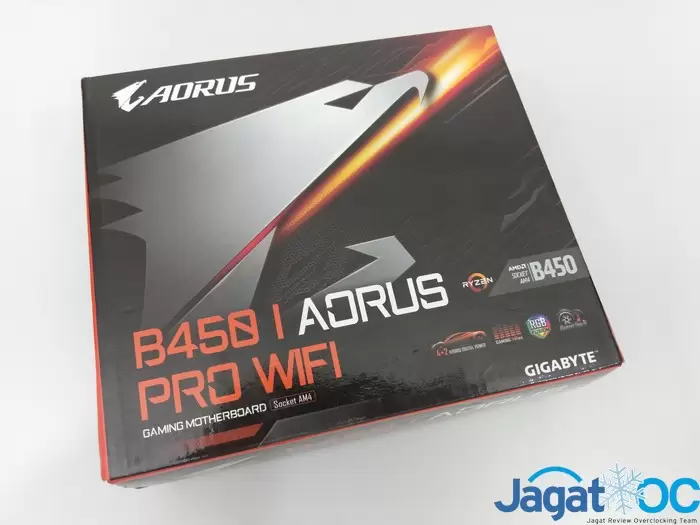 11ac Wi-Fi, Realtek ALC1220 audio, an M.2 heatsink and large VRM heatsink. However, it’s let down by its EFI, a lack of VRM cooling and lowly CPU power circuitry that undoubtedly led to our CPU throttling back under load. There are also only three audio outputs, no optical output and just two fan headers.
11ac Wi-Fi, Realtek ALC1220 audio, an M.2 heatsink and large VRM heatsink. However, it’s let down by its EFI, a lack of VRM cooling and lowly CPU power circuitry that undoubtedly led to our CPU throttling back under load. There are also only three audio outputs, no optical output and just two fan headers.
Three fan headers is the bare minimum for a typical enthusiast motherboard, but as it stands, you’ll be left wanting if you use the B450 I Aorus Pro WiFi with any setup other than a single-fan CPU cooler and a single case fan. As a result, if you want to overclock your Ryzen CPU, the Asus ROG Strix B350-I Gaming or its X470 counterpart are your best bet while, for less cash, Gigabyte’s own AB350N- Gaming WiFi is a good choice for a budget mini-ITX system
at stock speed, although it doesn’t support AMD’s StoreMI technology, and you’ll need an EFI update to support the latest CPUs. Gigabyte has made some superb mini-ITX boards for Intel CPUs, making it a real shame to see this AM4 board fall short.
ANTONY LEATHER
VERDICT
7.7
Total Score
Gigabyte B450 I Aorus Pro Wifi Review
Decent performance and great audio, but it desperately needs more fan headers, and the EFI and VRM cooling need some attention too.
Add your review | Read reviews and comments
Best Gigabyte B450 I Aorus Pro Wifi prices ?
MORE DEALS
-
Check Price at Amazon
TNR earns Amazon affiliate commissions from qualifying purchases. You can support the site directly via Paypal donations ☕. Thank you!
Gigabyte B450 I Aorus Pro Wi-Fi
56points
Gigabyte B450 I Aorus Pro Wi-Fi
Gigabyte B450 I Aorus Pro Wi-Fi
Why is the Gigabyte B450 I Aorus Pro Wi-Fi better than others?
- RAM speed?
2933MHz vs 2656. 42MHz
42MHz - USB 3.2 Gen 1 (USB-A) ports?
4 vs 3.6 - Signal-to-noise ratio (SNR)?
120dB vs 109.68dB - DisplayPort outputs?
1 vs 0.46 - Height?
170mm vs 231.55mm - Width?
170mm vs 274.81mm
Which comparisons are the most popular?
GIGABYTE B450 I Aorus Pro Wi-Fi
VS
Gigabyte B450M DS3H
GIGABYTE B450 I Aorus Pro
VS
MSI B450I GAMING PLIGAS AC AC 9000 AC AC AC 9000 AC AC AC AC AC0003
VS
ASROCK B550M -ITX/AC
GIGABYTE B450 I Aorus Pro Wi-Fi
VS
ASUS Prime B550M-A
GIGABYTE I AOORUS PROSIS
9000) A wi-fi
Gigabyte B450 I Aorus Pro Wi-Fi
VS
ASUS ROG Strix B350-F Gaming
GIGABYTE B450 I AORUS
VS
GIGABYTE B550I PRO AIROS I Aorus Pro Wi-Fi
vs
Asus Prime B550M-A WiFi II
Gigabyte B450 I Aorus Pro Wi-Fi
vs
Asus ROG Strix B660-G Gaming WiFi
Gigabyte B450 I Aorus Pro Wi-Fi
vs
Gigabyte A520I AC
Price match
Cheaper than Gigabyte B450 I Aorus Pro Wi-Fi
User reviews
Memory
maximum memory
Maximum memory (RAM).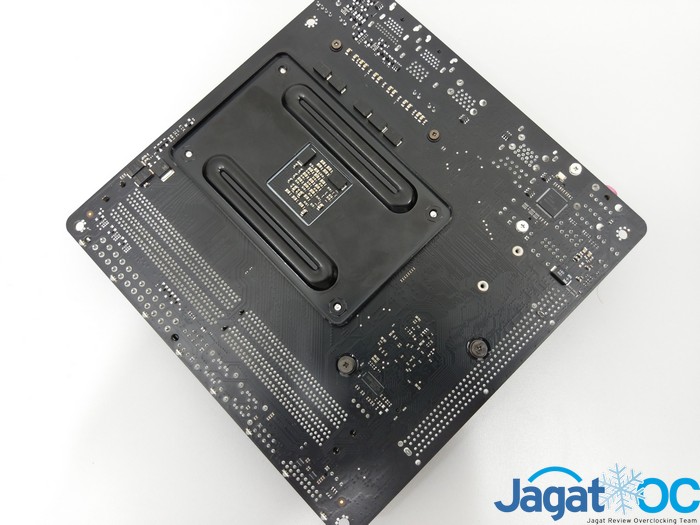
RAM speed
2933MHz
Can support faster memory which speeds up system performance.
RAM speed
3600MHz
The motherboard supports overclocking the RAM to a higher speed. By increasing the memory speed, we increase the performance of the computer.
memory slots
The more memory slots (DIMMs), the more RAM you can add to your computer. This is relevant for the upgrade, because. The memory bar can be installed in an empty slot, rather than replacing an already installed one. nine0003
DDR memory version
DDR (Double Data Rate Synchronous Dynamic Random Access Memory) is the most common type of main memory. New versions of DDR memory support higher maximum speeds and are more energy efficient.
memory channels
More memory channels increase the speed of data transfer between memory and processor.
Supports memory recovery code
✔Gigabyte B450 I Aorus Pro Wi-Fi
Memory error recovery code can detect and repair data corruption. It is used when necessary to avoid distortion, such as in scientific computing or when starting a server.
Ports
USB 3.2 Gen 2 (USB-A) ports
USB 3.2 Gen 2 supports speeds up to 10 Gbps. It was previously known as USB 3.1 Gen 2. These ports use the older USB-A connector.
USB 3.2 Gen 1 (USB-A) ports
USB 3.2 Gen 1 supports speeds up to 5Gbps. It was previously known as USB 3.1 Gen 1 and USB 3.0. These ports use the old USB-A connector.
USB 3.2 Gen 2 (USB-C) ports
Unknown. Help us offer a price.
USB 3.2 Gen 2 supports speeds up to 10 Gbps. It was previously known as USB 3.1 Gen 2. These ports use a USB-C connector.
USB 3. 2 Gen 1 (USB-C) ports
2 Gen 1 (USB-C) ports
Unknown. Help us offer a price.
USB 3.2 Gen 1 supports speeds up to 5 Gbps. It was previously known as USB 3.1 Gen 1 and USB 3.0. These ports use a USB-C connector.
USB 2.0 ports
The more USB 2.0 ports, the more USB 2.0 compatible devices you can connect to your computer.
USB 3.2 Gen 2×2 ports
Unknown. Help us offer a price.
USB 3.2 Gen 2×2 was introduced in 2019. It supports speeds up to 20Gbps and uses a USB-C connector. nine0003
USB 4 40Gbps ports
Unknown. Help us offer a price.
This version of USB 4 supports very high speeds up to 40 Gbps. Unlike USB 3.2, USB 4 can allocate bandwidth for video and data. These ports use a USB-C connector.
USB 4 20Gbps ports
Unknown. Help us offer a price.
This version of USB 4 supports speeds up to 20 Gbps. Unlike USB 3.2, USB 4 can allocate bandwidth for video and data. These ports use a USB-C connector. nine0003
Unlike USB 3.2, USB 4 can allocate bandwidth for video and data. These ports use a USB-C connector. nine0003
Thunderbolt 4 ports
Unknown. Help us offer a price.
Number of Thunderbolt 4 compatible USB ports. These ports support speeds up to 40 Gb/s, including a minimum PCIe speed of 32 Gb/s. This ensures that it can support two external 4K screens (or one external 8K screen).
Connectors
USB 3.2 Gen 1 ports (via expansion)
Unknown. Help us offer a price.
The number of USB 3.2 Gen 1 ports that can be added using the USB headers on the motherboard. nine0003
USB 3.2 Gen 2 ports (via expansion)
Unknown. Help us offer a price.
The number of USB 3.2 Gen 2 ports that can be added using the USB headers on the motherboard.
USB 2.0 ports (pass-through expanders)
Number of USB 2.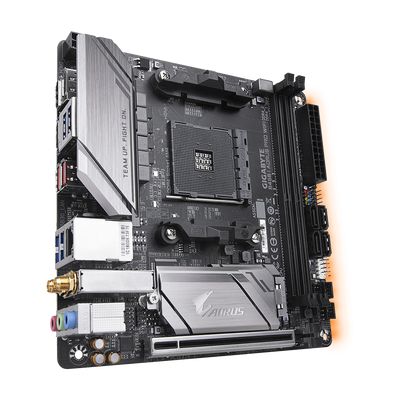 0 ports that can be added via pins (USB headers) on the motherboard.
0 ports that can be added via pins (USB headers) on the motherboard.
SATA 3 connectors
SATA is an interface used to connect storage devices such as hard drives and Blu-ray discs. The native data transfer rate of SATA 3 is 6 Gb/s, which is twice as high as that of SATA 2. It can be useful to use an SSD, because it improves the speed. nine0003
fan headers
These are the contact surfaces on the motherboard to which fans can be connected. Fans, of course, can also be connected directly to the power supply, but by connecting them through the motherboard, we get the ability to control devices through software.
USB 3.0 ports (pass-through expanders)
The motherboard has pins in the form of male connectors to which additional USB ports can be connected.
M.2 slots
M.2 is an interface used to connect various devices, mainly storage devices such as M. 2 SSDs. It is a revision of mSATA and supports much higher data transfer rates.
2 SSDs. It is a revision of mSATA and supports much higher data transfer rates.
There is a TPM connector
✔Gigabyte B450 I Aorus Pro Wi-Fi
Trusted Platform Module (TPM) is a component that greatly improves security. For example, it enables the creation of RSA keys in a secure environment, minimizing the risk of hackers. nine0003
U.2 connectors
U.2 is an interface used to connect various types of devices, mainly storage devices. It is equal in performance to M.2, but U.2 SSD drives are manufactured in the format of regular 2.5″ SATA drives, and because of this, they support much larger volumes than mSATA drives. PCIe slots are designed to connect peripherals to the motherboard, mainly graphics cards, less often than other cards such as sound and network. «x16» indicates the number of lanes. The more lanes, the higher the data transfer rate. PCIe 3.0 offers faster speed than PCIe 2.0 and better performance.
PCIe 4.0 x16 slots
PCIe slots allow you to connect various components such as video cards and SSDs to the motherboard. The number of data lanes (determined by the number after the «x») determines the data rate. PCIe 4.0 provides transfer speeds of 16GT/s, doubling the bandwidth provided by PCIe 3.0.
PCIe x1 slots
PCIe slots are designed to connect peripherals to the motherboard, mainly graphics cards, less often other cards: for example, sound and network. «x1» indicates the number of tracks. The more tracks, the higher the data transfer rate. nine0003
PCI slots
PCI slots are designed to connect peripherals to the motherboard, mainly graphics cards, less often other cards: for example, sound and network cards. PCI technology has been superseded by PCI Express technology, which offers higher data transfer speeds, but there are still many cards using PCI slots these days.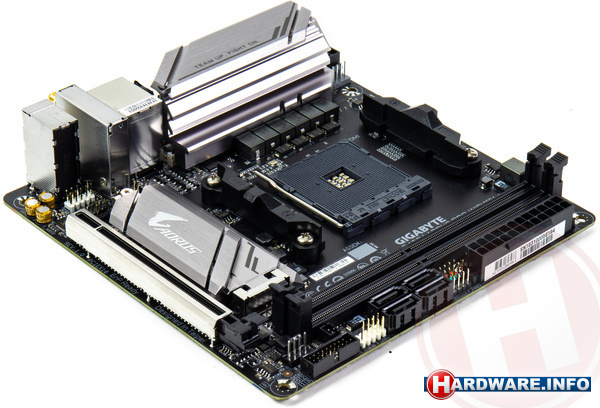
PCIe 2.0 x16 slots
PCIe slots are designed to connect peripherals to the motherboard, mainly graphics cards, less often other cards: for example, sound and network. «x16» indicates the number of tracks. The more tracks, the higher the data transfer rate. nine0003
PCIe x4 slots
PCIe slots are designed to connect peripherals to the motherboard, mainly graphics cards, less often other cards: for example, sound and network. «x4» indicates the number of tracks. The more tracks, the higher the data transfer rate.
PCIe x8 slots
PCIe slots are designed to connect peripherals to the motherboard, mainly graphics cards, less often other cards: for example, sound and network. «x8» indicates the number of tracks. The more tracks, the higher the data transfer rate. nine0003
Audio
Signal-to-noise ratio (SNR)
When a digital signal is converted to analog (for example, when playing sound through speakers or headphones), a certain amount of noise is carried in the signal. Higher SNR means less noise and better audio quality when converting.
Higher SNR means less noise and better audio quality when converting.
audio channels
Each channel is a separate stream of audio information. The more channels, the more realistic the experience, such as surround sound. nine0003
S/PDIF out port available
✖Gigabyte B450 I Aorus Pro Wi-Fi
S/PDIF is an interface used to transmit high quality digital audio.
audio connectors
The more connectors, the more audio devices (speakers, microphones) you can connect.
Memory
RAID 1 support
✔Gigabyte B450 I Aorus Pro Wi-Fi
RAID is a data storage technology that combines multiple disks in one array. RAID 1 is a technology of mirror duplication of information on disks. Provides increased data storage security, as if one drive fails, the data will be available from another drive. nine0003
Support for RAID 10 (1+0)
✔Gigabyte B450 I Aorus Pro Wi-Fi
RAID is a data storage technology that combines multiple drives in one array.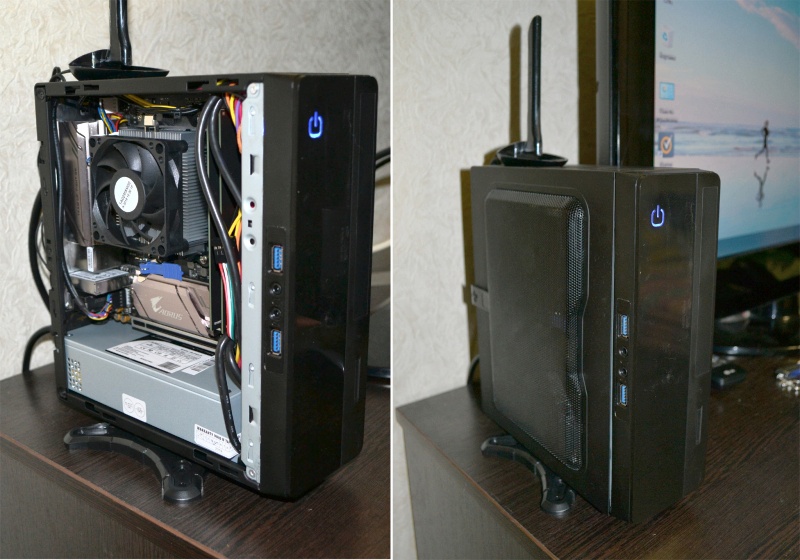 RAID 10(1+0) is a technology of striping and mirror duplication of information on disks. Has higher processing capacity and performance compared to a single drive. It also provides enhanced data storage security, as if one drive fails, the data will be available from another drive. nine0003
RAID 10(1+0) is a technology of striping and mirror duplication of information on disks. Has higher processing capacity and performance compared to a single drive. It also provides enhanced data storage security, as if one drive fails, the data will be available from another drive. nine0003
RAID 5 support
✖Gigabyte B450 I Aorus Pro Wi-Fi
RAID is a data storage technology that combines multiple drives into one array. RAID 5 is a disk striping technology. It has higher performance compared to a separate disk. It also provides enhanced data storage security, as if one disk fails, the data will still be available on the other, thanks to the use of non-dedicated parity disk technology. nine0003
RAID 0 support
✔Gigabyte B450 I Aorus Pro Wi-Fi
RAID is a data storage technology that combines multiple drives in one array. RAID 0 is a disk striping technology. Has higher processing capacity and performance compared to a single drive. The disadvantage is that if one drive fails, data will be lost on all drives.
The disadvantage is that if one drive fails, data will be lost on all drives.
RAID 0+1 support
✖Gigabyte B450 I Aorus Pro Wi-Fi
RAID is a storage technology that combines multiple disks in a single array. RAID 0+1 is a technology of striping and mirror duplication of information on disks. It has higher processing capacity and performance compared to a single drive. It also provides increased data storage security, because if one drive fails, the data will be available from another drive.
Others
HDMI connectors
More HDMI connectors allow you to connect multiple devices at the same time, such as game consoles and TVs. nine0003
Price comparison
Which motherboards are better?
Gigabyte releases Mini ITX motherboard B450i AORUS PRO WIFI
Gigabyte will soon release the B450i AORUS PRO WIFI motherboard in mini-ITX form factor.
This motherboard has 4 + 2 power phases, two phases are most likely reserved for additional power for the integrated video core. It has Wi-Fi 802.11 ac to provide wireless internet access.
nine0012
You can install one SSD storage 2280 m2 on it, which will be covered with a heat sink, it has four SATA connectors. You also get two USB 3.1 Gen 2 ports on the back, along with four USB 3.1 Gen 1 ports.
Author — Niaz. Posted: 18 August 2018 15:35. Product — Gigabyte B450i AORUS PRO WIFI
Gigabyte Z79 motherboard introduced0 Aorus Xtreme…
Gigabyte adds Z790 Aorus Xtreme, Z790 Aorus Master, Z79…
ASUS ROG Maximus Z790…
ASUS launches ROG Maximus Z790 Extreme and ROG Maximus Z790 H…
ECSIPC LEET Z790H7-A… motherboard introduced
ECS Industrial Computer has expanded its motherboard portfolio with the LEET Z790H7-A, which introduces…
MSI AMD B650… 9 motherboards introduced0012 MSI expands its AMD B650 motherboard portfolio with MPG, MAG, and PRO series models to…
EVGA Z790 DARK K|NGP|N and CLASSIFIED motherboards are introduced …
EVGA expands its motherboard portfolio with Z790 DARK K|NGP motherboards |N and Z790 CLASSIFIED, benchmark…
Gigabyte Aorus and Aero boards based on AMD B65 chipsets…
Gigabyte has expanded its range of motherboards with models from the Aorus and Aero series based on the chipset…
Review X670 AORUS ELITE AX.
